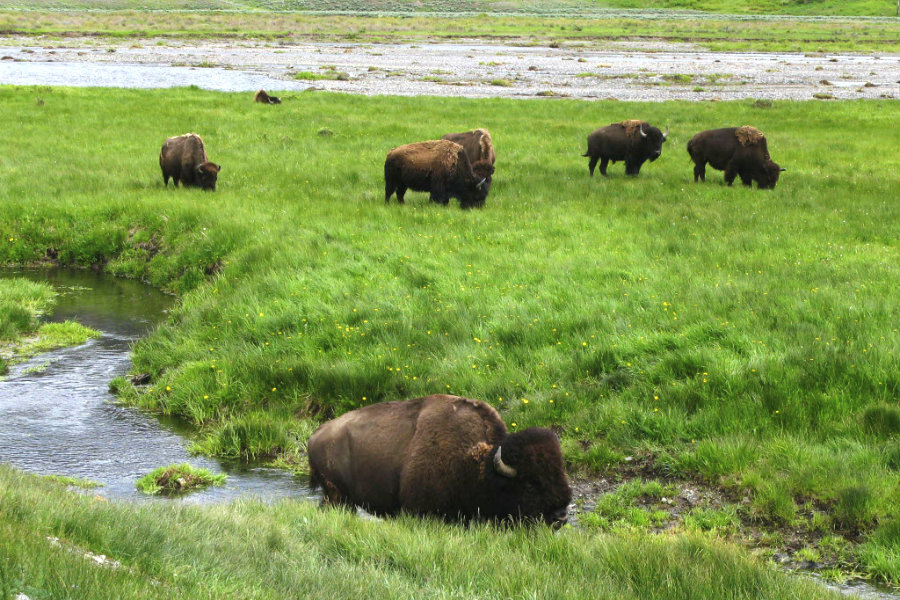Enough with the bison selfies at Yellowstone, says National Park Service
Loading...
Stop taking selfies with the bison, please.
The request is implied in a notice published Wednesday by the National Park Service (NPS), imploring park visitors to keep their distance from wildlife, no matter how calm the animals seem.
The notice details an incident involving a mother who was injured by bison at Yellowstone National Park Tuesday after she and her daughter turned their backs on one of the animals to take a picture. The attack makes the woman the fifth person injured in an encounter with bison this summer – and the latest in a growing list of people around the world who have been hurt or killed for the sake of a good selfie.
“The woman and her daughter were by the trailhead sign when they decided to take a picture with a bison that was approximately 6 yards away from them near the trail,” the NPS notice reads. Park regulations instruct visitors to stay at least 25 yards away from all large animals.
“They heard the bison’s footsteps moving toward them and started to run, but the bison caught the mother on the right side, lifted her up and tossed her with its head,” the notice continues.
The woman was treated at an onsite clinic and released with minor injuries. But not everyone has fared so well.
In August last year, a Mexican man died trying to take a selfie with a .45 caliber gun – while drunk. That same month, a Polish couple attempting to snap a photo at the Cabo da Roca cliffs in Portugal died when they slipped and fell into the Atlantic Ocean.
As selfies proliferate across social media, more people have fallen victim to the temptation to take a good picture despite the risks involved. In a telling snapshot of how bad it’s become, the Russian government in early July launched a “safe selfies” campaign in the hopes of preventing young people from dying for a good photo, The Christian Science Monitor’s Gretel Kauffman reported.
The campaign followed a series of fatal selfie-related incidents, including a young woman who fell to her death taking a selfie on a bridge, and a Moscow woman who accidentally shot herself in the head while posing with a gun in May.
“Even a million ‘likes’ on social media are not worth your life and well-being,” according to the campaign’s motto.
The statement seems obvious. So why do people keep doing it?
“There’s this general phenomenon where we raise the bar for ourselves of what would be a fun selfie to take and share with others,” Zlatan Krizan, an associate professor of psychology at Iowa State University, told LiveScience. “Nobody wants to be outdone.”
The phenomenon is linked to the concept of social comparison, by which people determine their personal and social worth based on how they stack up to others, Prof. Krizan said.
Though the theory was developed in 1954, it has some very real applications today, especially online: A selfie proves that a person was in a particular place, doing interesting things, said Krizan. And as the standard rises for what is considered interesting, he added, the level of risk that people are willing to take for a potentially impressive may also go up.
Case in point: Following the New York Times report on the woman who was injured by bison at Yellowstone, readers showed they were unfazed by the warning.








